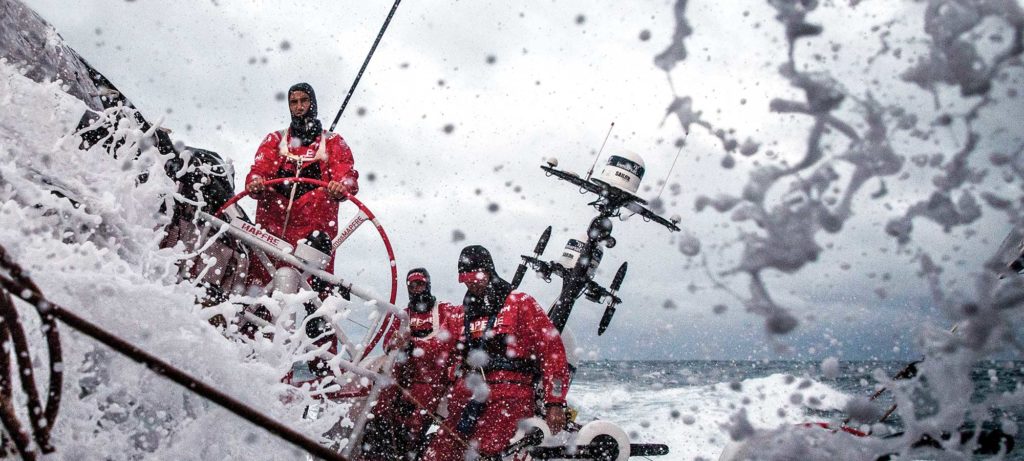
It’s early on December 13, 2017. We’re somewhere in the Southern Ocean, between Cape Town and the big frozen continent at the bottom of Earth, three days into the third leg of the Volvo Ocean Race. It’s been a full-tilt southerly blitz to the “Ice Gate,” a virtual boundary established by race organizers, a no-go zone to keep the fleet away from bergs and growlers. The boundary lies ahead, but to our west is a low-pressure system that will pack a punch. The smell of breakfast permeates the moist interior as the sailors who have just come off watch warm up and refuel with hot porridge. The conversation between skipper Xabi Fernández and navigator Juan Vila seems to carry more weight than usual. They weigh the pros and cons of their battle plan. There’s much to consider about the drag race to zone: how hard to push, the ramifications if something breaks, the strength of the storm, and how to get the most wind and stamina out of the crew. The safe, conservative approach is to hedge north, like some of the other teams are doing. The alternative is to press on toward the zone. The danger is, should something break and they need to run downwind, there’s no margin for error. Cross into the zone and get pegged with a penalty. But the rewards for those who dare to go deeper are tremendous. There’s more wind and more speed. Once there, however, the routing software plots a manic line of zigzags along the boundary.
Later, up on deck, Fernández is at the helm and Sophie Ciszek is trimming when watch captain Pablo Arrarte climbs out of the companion and into the cockpit to break the news of what’s in store for the next few days. They’re about to do about 50 jibes. “Oh my God! 50?” Ciszek exclaims. “Don’t take your gear off for six days.”
The mood intensifies as news of the plan spreads across the boat. There’s anticipation and an elevated priority of preparation. It will be hard living over the next few days, and soon, the gear stack is in order, the boat is bailed as best it can be, and the sailors are rested, eyes focused and filled with anticipation for what lies ahead.
Vila’s words ring out from his dark nav station tucked underneath the companionway.
“Jibing in five!”
Fatigue is setting in and nerves are rattling, especially for those woken from deep sleep or interrupted from a good meal of freeze-dried stew.
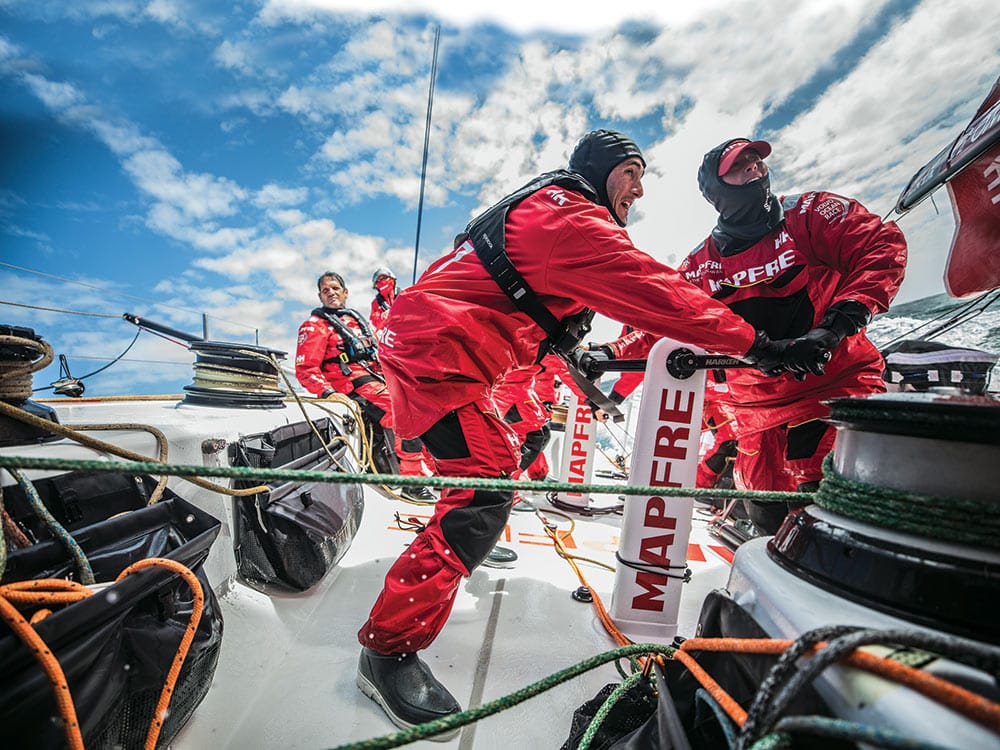
Part of the crew goes on deck, and the remainder stays below to move the gear stack. Initially, everything is orderly, nice and tidy, but after a dozen or so maneuvers, fatigue is setting in and nerves rattling, especially for those woken from deep sleep or interrupted from a good meal of freeze-dried lamb stew. That’s when the lightest bags develop wings and reach the other side of the boat without touching the cabin sole. The once-organized stack becomes a muddle of bags, inevitably with the daily food bag buried at the bottom.
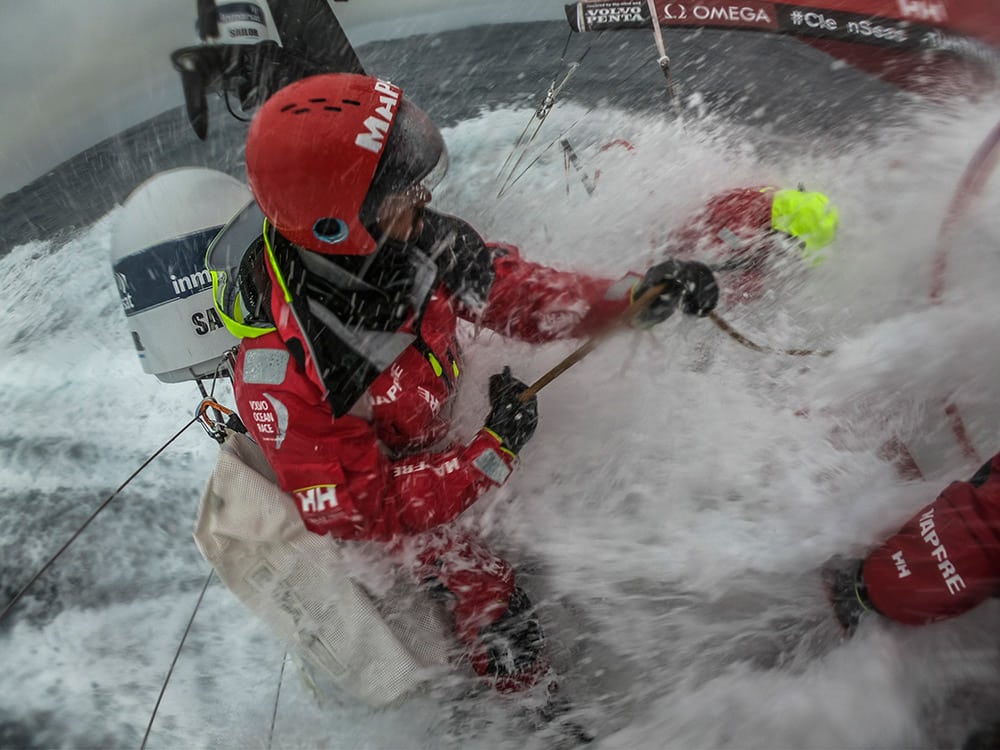
This entire tortuous pre-jibing stacking procedure can take up to 30 minutes, depending on sea state and wind conditions. It’s worse at night, when conditions seem to worsen and visibility is difficult. The bags also get heavier with every jibe.
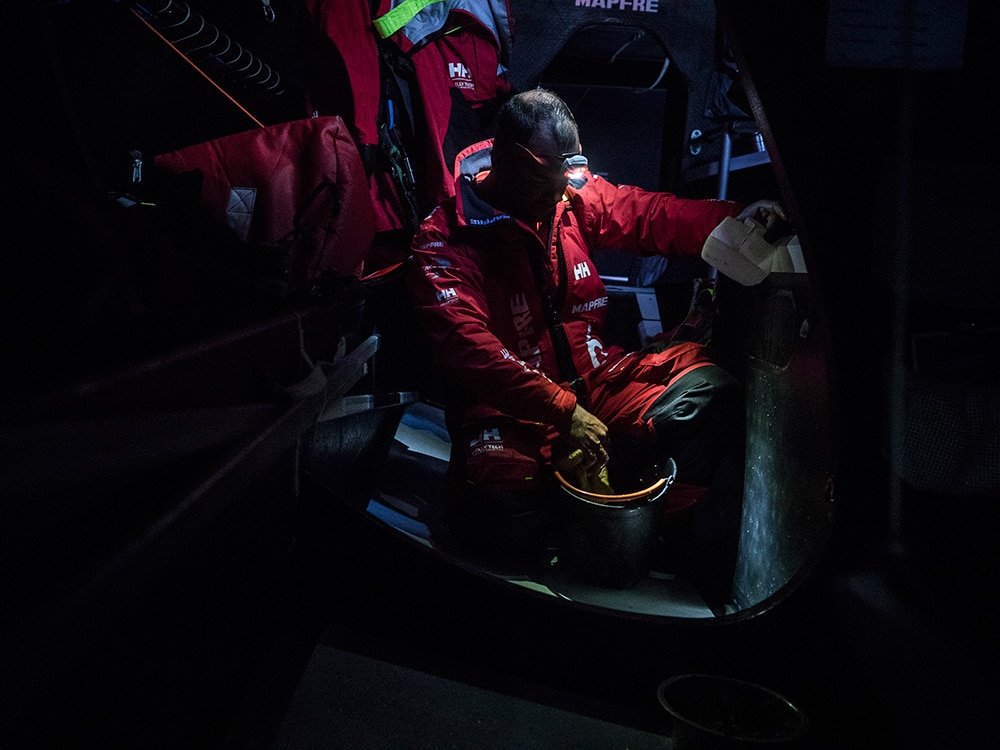
Water magically appears in the bilges seconds after it’s removed. It’s a full-time job to bail water before the jibe, which helps keep the stack — and the boat — as dry as possible. With gallons upon gallons of cold seawater washing across the deck, cascading into the cockpit from the hatch cover, it’s a game of luck to time unzipping the cover and dumping the bucket of bailed water out of the hatch. Failing to get the companionway hatch closed in time results in water pouring into the boat, and another hour or more of bailing.
Too many jibes. Everyone’s lost count, but I can see determination in their eyes. They know what’s at stake.
While there’s plenty of activity below, there’s much more happening on deck. Wave after wave crashes over the boat. One knocks Rob Greenhalgh clear off the helm, causing his inflatable PFD deploy. He’s OK, recovers quickly, and keeps full steam ahead until the end of his watch. As the jibing continues, we skirt along the ice gate. Air temperatures plummet, and even in the relative warmth of the interior, every breath is visible against survival suits swaying on the rack.
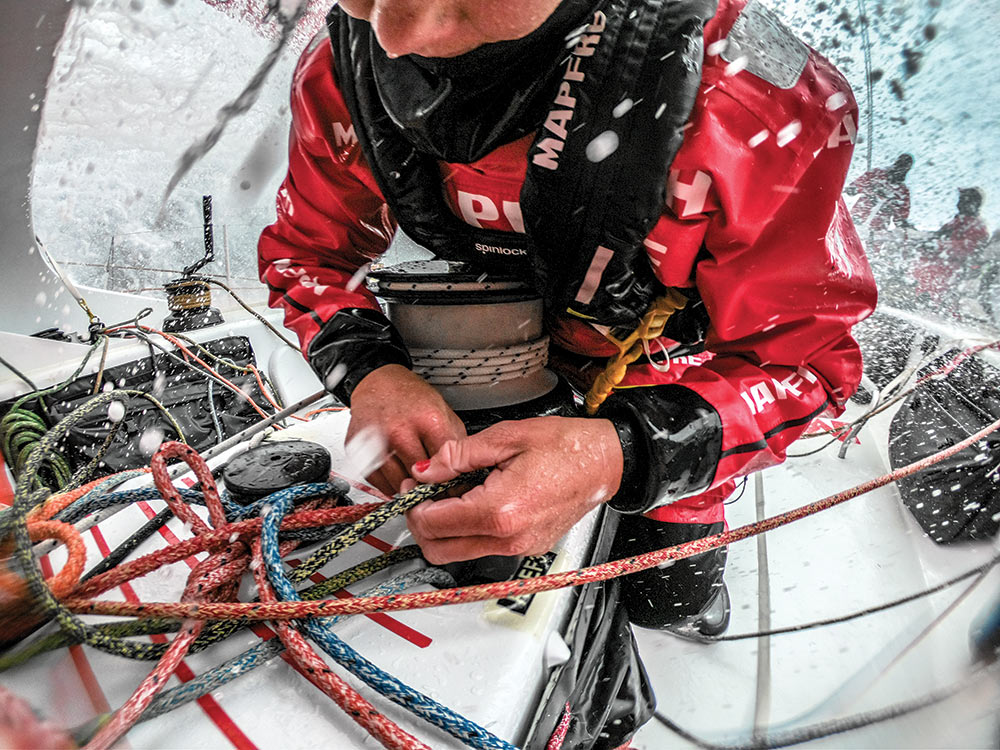
Despite the insane pace and harsh conditions on deck, the interior is eerily quiet against the usual symphony of creaking carbon fiber, rushing water and moaning winches. Everyone below is asleep. Vila sleeps sitting up, his head swaying with the movement of the boat as he steals a power nap before the next jibe. I’m bundled up at the media station, in the last of my warm clothes, when there’s a tap on my shoulder. Louis Sinclair is asking me if I have a coffee mug he can use to make coffee for the crew on deck. It seems the rest of the mugs have perished in the sea. Hot chocolate coffees, or even cold chocolate bars, make a huge difference to morale, especially in conditions such as these. This one last-remaining coffee mug will become one of the most safely guarded items on the boat for the next 10 days.
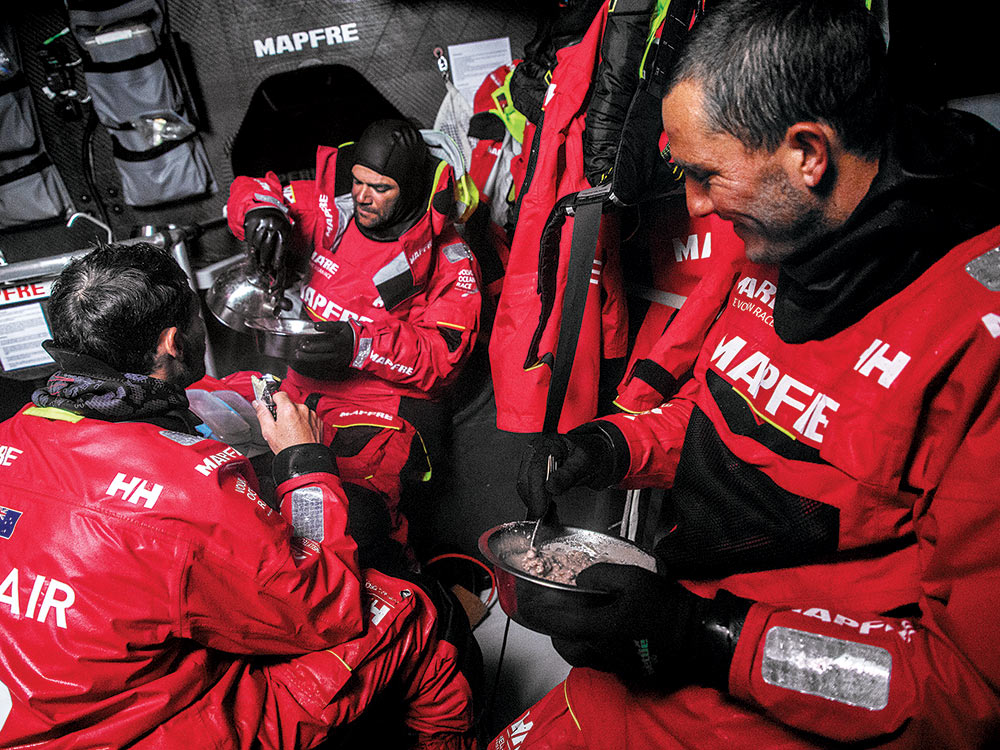
The crew fights hard through every jibe, snagging sleep wherever possible in places normally deemed unfit to sleep but pass as acceptable when exhaustion wins over adrenaline. Too many jibes. Everyone’s lost count, but I can see determination in their eyes. They know what’s at stake, and Dongfeng is in sight.
“Jibing in five,” Vila hails out again. It’s time to move the stack and put the ice gate in our wake.
Editor’s note: Mapfre emerged from its Southern Ocean jibing duel with the Dongfeng Race Team with the lead, and eventually the leg win, putting them atop the overall leader board. Edney, of Omaha, Nebraska, was onboard reporter with Mapfre for the leg and sustained a head injury while transferring gear belowdecks, forcing her to sit out Leg 4.









